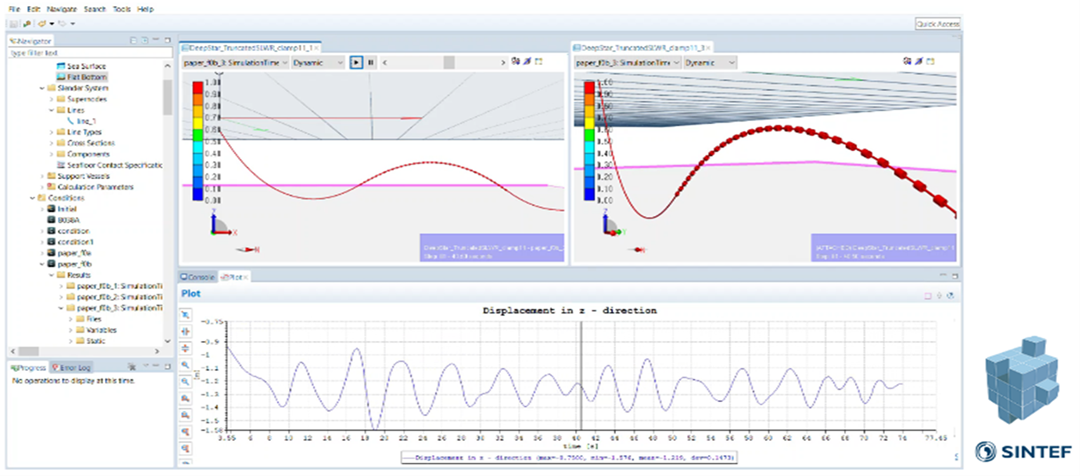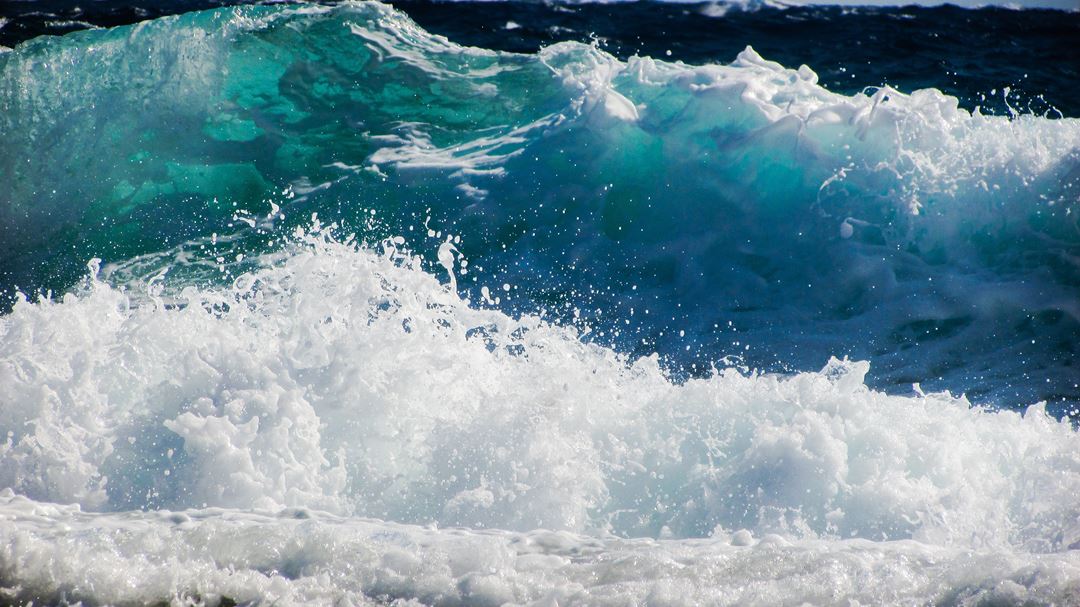A time-domain (TD) coefficient-based model has been implemented into the existing non-linear, 3D finite element tool RIFLEX, as VIVANA-TD. VIVANA-TD intends to capture tension variation, geometry changes, multi-directional flow conditions as well as evaluating the wave frequency and VIV load contributions in the same simulation. These alleviate some of the key limitations in the present frequency domain prediction tools.
The overall objective of VIVANA-TD development is to 1) improve the design practice and 2) provide a reliable time domain VIV prediction tool to the industry.
1. Close the gaps and reduce uncertainties in the existing VIV design practice for:
- steady/oscillatory flow
- non-linear structural behavior, e.g., hysteresis damping, soil-pipe interaction
- combination of other load effects, e.g., wave loads, slugging loads
2. Provide industry a time domain VIV prediction tool, which will:
- combine complex load effects and structural non-linearity in a time domain analysis
- increase safety and cost-effective design of slender marine structures, e.g., power cables, umbilical, risers/pipelines, mooring lines etc.
Lazy Wave Riser Joint Industry Project (LWR JIP) Phase 1 work has been carried out as a first step to develop an integrated model to predict the response from waves and current in a time domain with focus on the steel lazy wave riser. The main objective is to qualify VIVANA-TD for industrial use with pure CF (cross-flow) response prediction, in particular for Steel Lazy Wave Risers (SLWRs).
The following has been achieved:
- Qualified VIVANA-TD software for VIV prediction subjected to both constant current and vessel motions with focus on CF response
- VIVANA-TD is ready to be used by the industry
- Defined empirical basis and rational methods for calculation of VIV for SLWRs
- Defined road map towards future integrated model for combined waves and VIV loads
It has also been identified in Phase 1 that the combined IL (in-line) and CF load is a necessary next step. IL load is important to describe VIV physics and form the basis for modelling more complex load effects, e.g., 3D currents and wave loads. The present load model also needs to be improved to predict VIV responses in oscillatory flow for small KC number conditions.
The original combined IL and CF load model has been further improved in a PhD study at NTNU, and is considered ready to be validated in VIVANA-TD. The predicted IL and CF responses compare well with the Hanøytangen high mode fjord test data. The frequency variation in space and time as part of the synchronization process is inherited in the time domain model. Therefore, there is no need for additional frequency response models to combine a set of harmonic responses to approximate the time/space sharing, as in the traditional frequency domain VIV prediction tools. The tension variations can also be described by using the non-linear structural model. This promising new model needs to be further qualified in Phase II work so that it can be used by the industry.
Based on these developments, the Lazy Wave Riser JIP – Phase 2 has started, which focuses on the use of VIVANA-TD for the design of deep-water risers and cables.
The objective of the Phase 2 work is to:
- Validate VIVANA-TD with the combined IL and CF load model for constant flow conditions with focus on high mode VIV response
- Validate VIVANA-TD with the combined IL and CF load model for vessel motion induced VIV
- Implement hysteresis damping model
- Improve the use of VIVANA-TD as a design tool
The planned project duration for the Phase 2 work is Q3 2021 – Q3 2023, with the consideration of further extension to a new phase. Phase 2 of the JIP was supported by Equinor, BP, Petrobras, Subsea7 and Kongsberg Maritime. SINTEF Ocean invites interested industry partners to join the JIP.


